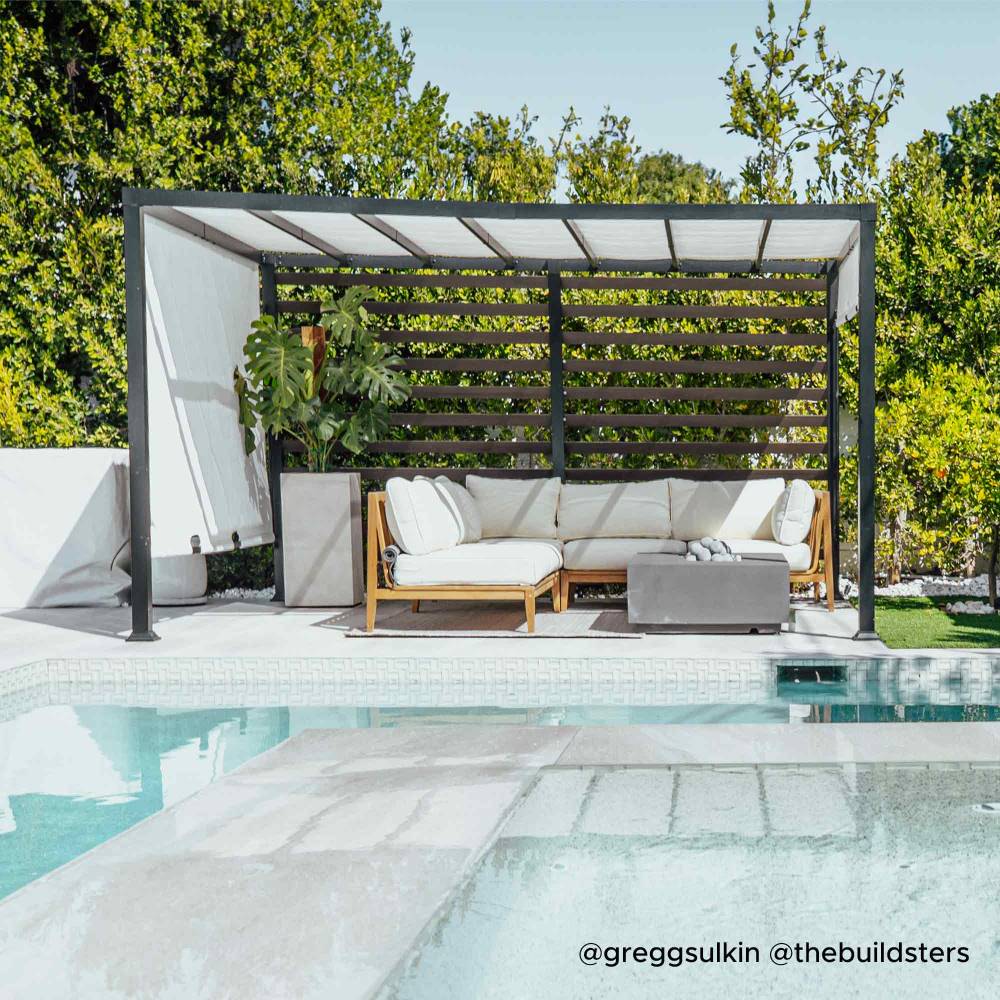A gazebo isn’t just a garden accessory — it’s a statement.
It’s the center of family gatherings, the anchor of outdoor design, and a year-round invitation to step outside and unwind.
But if you’ve ever searched online for one, you know: choosing the right gazebo can feel overwhelming.
Hardtop or soft-top? Wood or metal? Permanent or portable?
With so many materials, shapes, and features available, it’s easy to get lost in the details.
The truth is, finding the perfect gazebo is not just about size or price — it’s about understanding what fits your lifestyle, your space, and your seasons.
Let’s break down exactly what to look for in a gazebo, so your next outdoor upgrade feels effortless and built to last.
1. Start with Purpose — Why Do You Want a Gazebo?
Before you scroll through product pages, step back and ask:
What do I want my gazebo to do?
Different uses require different structures.
- Outdoor entertaining: Choose a hardtop gazebo with ceiling hooks for lights and fans. It creates an all-weather social hub.
- Shade and relaxation: A soft-top gazebo with mosquito netting offers airflow and protection — perfect for afternoon reading.
- Hot tub cover or grill station: Look for grill gazebos with heat-resistant roofs and ventilation gaps.
- Temporary setups for events: Portable pop-up gazebos are lightweight, collapsible, and easy to transport.
Once you know your purpose, the rest — materials, design, anchoring — falls into place.
2. Material Matters — Strength Meets Style
What your gazebo is made of?
The first major decision: what your gazebo is made of. Each material tells a different story — not just in looks, but in performance.
Wood Gazebos
Warm, timeless, and naturally beautiful.
Ideal for traditional gardens or rustic patios.
Cedar and redwood resist insects and decay better than untreated lumber.
But remember: wood requires regular sealing or staining to maintain its rich color.
Metal Gazebos
Typically made of steel or aluminum.
Stronger against wind and snow, with minimal maintenance.
Powder-coated finishes protect against rust and fading.
Aluminum gazebos are lightweight yet durable, while steel models like SUNJOY’s metal series deliver a premium, high-strength feel for year-round use.
Fabric Gazebos
Best for portability and affordability.
Great for renters or seasonal use.
Polyester or UV-resistant canopies block sun and light rain.
The right material depends on whether you prioritize aesthetics, durability, or convenience — or a balance of all three.
3. Roof Design — Function in Every Layer
Gazebo roofs do more than provide shade; they control airflow, stability, and visual impact.
Single Roofs
Clean and simple. Great for smaller gazebos or minimalist setups.
Double Roofs (2-tier)
This design allows heat and wind to escape through the top vent, improving comfort and stability. It’s a must for anyone living in warm or windy climates — and a signature feature of many SUNJOY hardtop gazebos.
Roof Material
- Galvanized steel: Best for heavy-duty use; rust-resistant and long-lasting.
- Polycarbonate panels: Let in natural light while blocking UV rays.
- Fabric canopies: Ideal for affordability and style flexibility.
Your roof choice defines not just the look of your gazebo, but its performance through the seasons.
4. Size and Shape — Match the Space You Have
One of the biggest mistakes people make is buying a gazebo that doesn’t suit their outdoor layout.
Measure first, dream later.
Gazebos typically range from 8x8 ft (for compact spaces) to 13x15 ft or larger (for entertaining).
A 10x10 gazebo fits most patios or decks comfortably.
A 12x16 gazebo offers more space for furniture or dining.
An octagon or hexagon shape adds a unique architectural element, perfect for gardens.
Pro Tip: Leave at least 2–3 feet of clearance around the gazebo perimeter for easy access and airflow.
If you’re working with a deck or uneven surface, look for adjustable posts or mounting kits for extra stability.
5. Features That Define Quality
When you’re comparing gazebos, focus on functional details that elevate usability and longevity.
Here’s what separates a good gazebo from a great one:
- Ceiling Hook: Ideal for hanging lanterns, chandeliers, or heaters.
- Mosquito Netting: Keeps insects away while maintaining ventilation.
- Curtains or Privacy Panels: Adds shade, coziness, and flexibility.
- Anchoring System: Ensures wind resistance and safety.
- Gutter Design: Prevents water pooling and directs rain away.
Premium gazebos, like those from SUNJOY, include dual tracks for both curtains and nets — allowing you to switch from open-air relaxation to enclosed comfort in seconds.
6. Assembly & Maintenance — The Hidden Essentials
A gazebo is an investment, but it shouldn’t feel like a construction project.
Ease of Assembly
Look for pre-drilled holes, labeled hardware, and step-by-step manuals. SUNJOY’s ready-to-assemble kits often require just two people and a single afternoon — no contractor needed.
Maintenance Tips
- Wipe down metal frames with mild soap and water.
- Reapply protective coatings or sealants annually for wood.
- Check bolts and joints seasonally for stability.
A little care keeps your gazebo looking new and performing flawlessly for years.
7. Design Aesthetics — The Finishing Touch
Your gazebo should complement your home’s personality.
Modern homes:
Choose sleek, minimalist metal designs with black or gray finishes.
Rustic or traditional homes:
Cedar or driftwood-tone gazebos blend beautifully with natural surroundings.
Garden settings:
Decorative posts, lattice details, or soft drapes create a romantic retreat.
A well-chosen gazebo doesn’t compete with your architecture — it completes it.
8. Bonus: How to Future-Proof Your Gazebo Investment
When choosing a gazebo, think beyond this season.
Ask yourself:
- Can it handle your local weather conditions?
- Does it have accessories you can add later — like curtains, shelves, or LED lights?
- Will it still look timeless five years from now?
Gazebos like SUNJOY’s modular models are designed for longevity and adaptability. You can personalize them year after year without replacing the entire structure.
That’s what turns a simple purchase into a long-term lifestyle investment.






